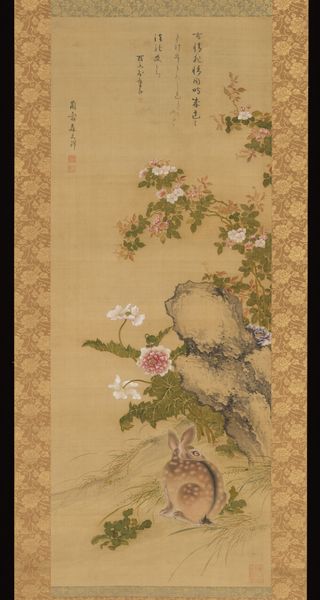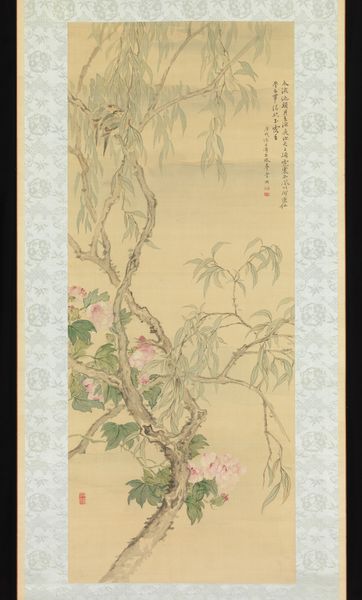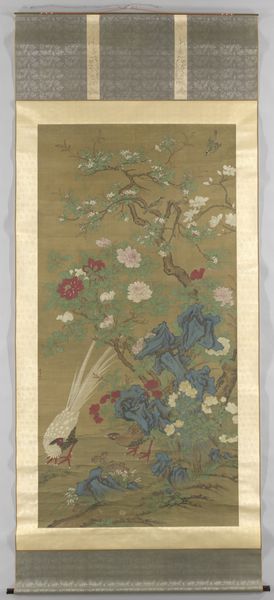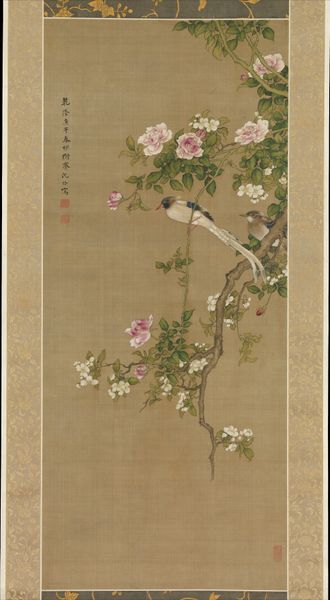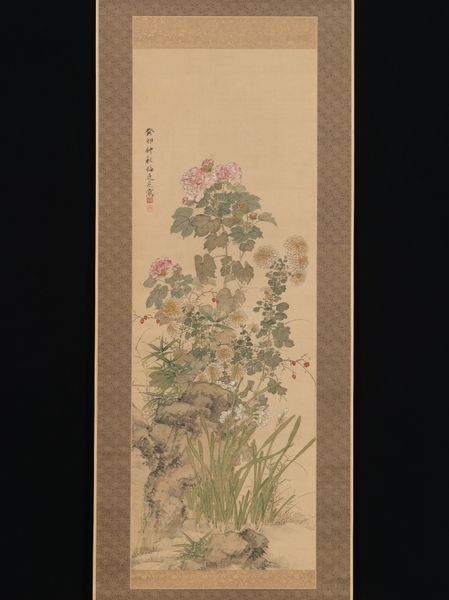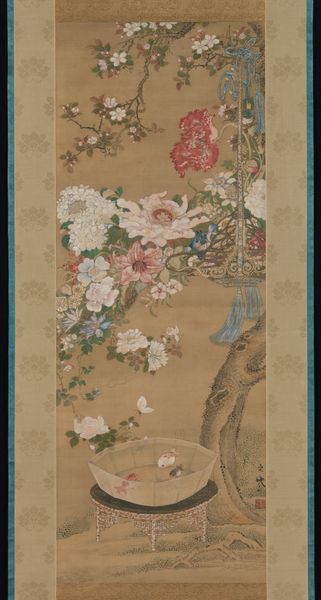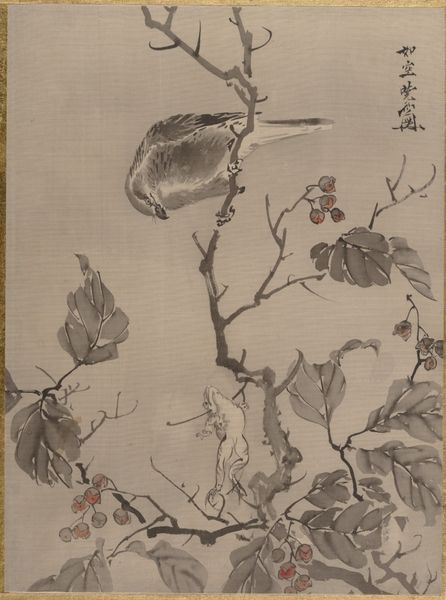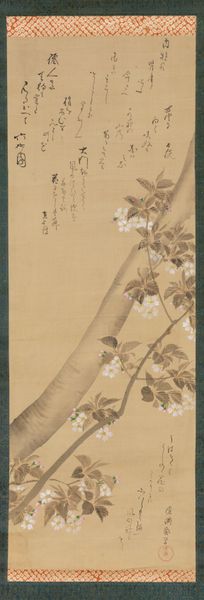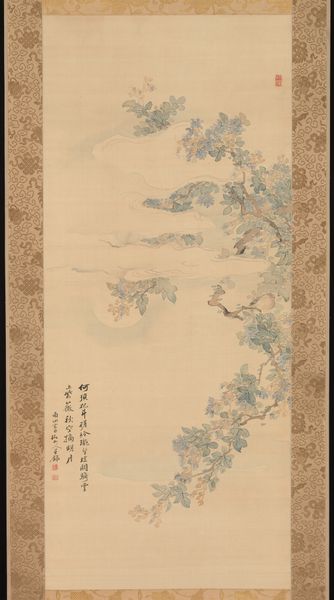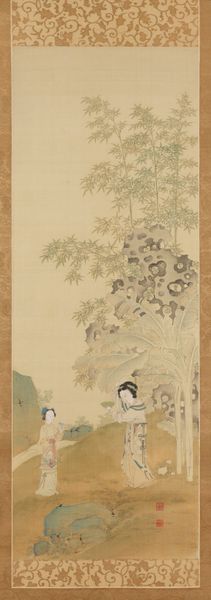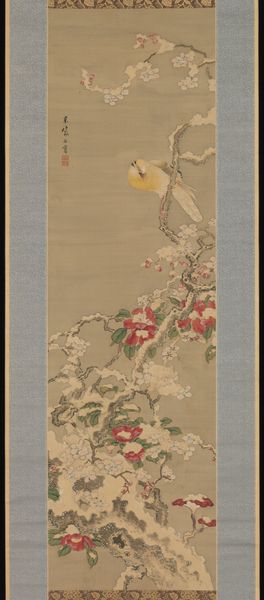
Dimensions: 129.5 × 44.5 cm (51 × 17 1/12 in.); overall: 201.8 × 61 cm (83 × 24 in.)
Copyright: Public Domain
Curator: Standing before us is “Hibiscus and Magpies,” a watercolor on silk created around 1847 by Yamamoto Baiitsu. It’s currently held at The Art Institute of Chicago. Editor: The soft hues create a world of gentle contemplation. It's really calming to look at, almost dreamlike with those muted tones. Curator: What I find particularly interesting is the way the materials themselves—the silk and the watercolor— dictate the composition. The absorbency of the silk allows for those blurred edges and soft gradations of color. We can appreciate Baiitsu's command of these elements and how integral they are to creating that peacefulness you describe. Consider also the availability of high-quality silk during this period and what access the artist may have had. Editor: Absolutely. Beyond the technique, I see the symbolism embedded in the painting reflecting socio-political currents of the time. Hibiscus often represents gentle beauty, and magpies frequently signify joy and good fortune. Do you think there's an element of escapism here, offering an idealized natural world as a counterpoint to potentially turbulent societal conditions in Japan during the late Edo period? Curator: Possibly. Escapism can be another function of art's process, and also a commercial consideration. The delicacy and refinement of this artwork surely spoke to a certain clientele. This imagery promotes specific aspirational values during that era, a commodification of nature if you will. The subtle elegance makes it highly desirable to hang within a refined interior space. Editor: I also wonder about the role of women in art like this—both as consumers and potentially as unacknowledged creators or influences within Baiitsu's artistic circle. Were there female artisans involved in preparing the silk or pigments? Who was buying these paintings, and what messages did these idyllic images send within domestic spaces concerning their prescribed roles? Curator: That’s a great perspective. Looking at the creation of the materials, or considering the consumption and the domestic setting reveals complex relations of production. I agree the silk points to various tiers of laborers crucial to this kind of imagery. Editor: It definitely offers more to unpack than first meets the eye. Thanks to his artistry and these contextual nuances, it remains captivating centuries later. Curator: Agreed, it’s in reflecting on these elements together we arrive at a better, fuller understanding.
Comments
No comments
Be the first to comment and join the conversation on the ultimate creative platform.
